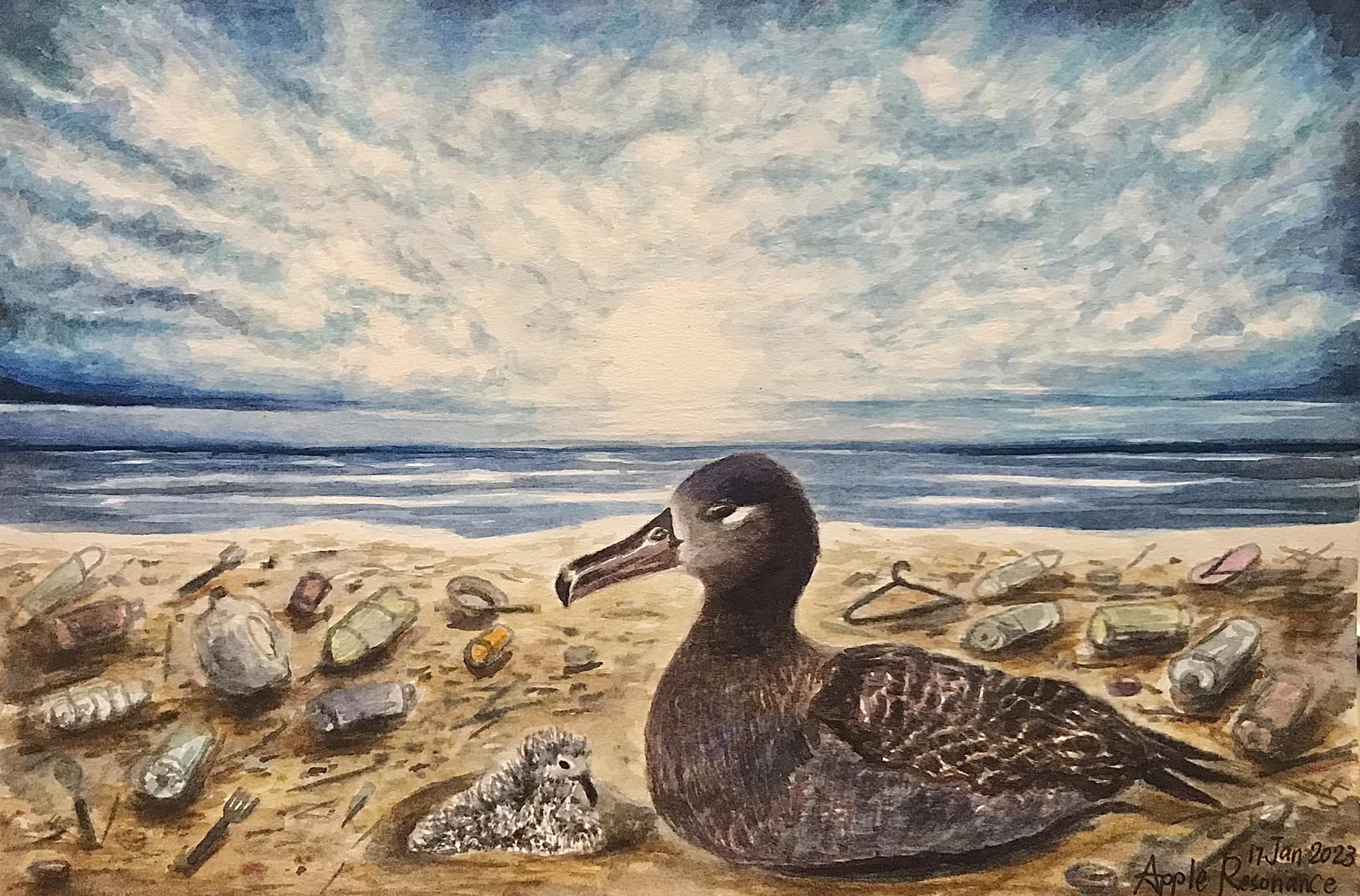 “Illuminate Our Destiny”, this Black-footed Albatross breeding close to a Hawaiian shore is at risk to storm surges and sea level rise, by Apple Resonance of Artists & Biologists Unite for Nature (ABUN) for World Albatross Day 2023, after a photograph by Eric VanderWerf
“Illuminate Our Destiny”, this Black-footed Albatross breeding close to a Hawaiian shore is at risk to storm surges and sea level rise, by Apple Resonance of Artists & Biologists Unite for Nature (ABUN) for World Albatross Day 2023, after a photograph by Eric VanderWerf
The paper’s abstract follows:
“The U.S. Pacific Islands (USPIs) comprise a globally significant region for seabirds, with some of the largest and most diverse assemblages of tropical seabird species in the world. To help direct seabird conservation in USPIs, we conducted a survey of 75 regional seabird experts and compared results with our own technical risk assessments based on 14 scoring criteria for all 27 nonfederally listed seabird species with confirmed breeding populations in USPIs. Survey respondents identified 28 factors for ranking priority species for restoration. The 3 most cited were climate change vulnerability (36.0%), restricted distribution (10.5%), and presence of introduced predators (9.4%). They were also largely in agreement with the priority species identified in our technical risk assessment. Combining both assessments, the 5 species identified as being most in need of colony restoration projects were (in descending order) black-footed albatross (Phoebastria nigripes), Polynesian storm-petrel (Nesofregetta fuliginosa), Tristram's storm-petrel (Hydrobates tristrami), Bonin petrel (Pterodroma hypoleuca), and Tahiti petrel (Pseudobulweria rostrata). Respondents also identified 21 source colonies for translocation and 107 receptor sites for colony restoration. Our collaborative approach presented a unique opportunity to gain a collective insight into the perceived threats for seabirds throughout the region and identified priority species and potential sites for restoration projects. Furthermore, our study highlighted the fact that seabird experts across the region consider climate change and the resultant loss of low-lying seabird islands a primary conservation concern that increases the urgency of colony restoration projects on high islands across the USPIs.”
Reference:
Raine, A.F., Gregg, J., McFarlin, M., Driskill, S., Swift, R. & Raine, H. 2025. Seabird restoration priorities for the U.S. Pacific Islands. Conservation Biology doi.org/10.1111/cobi.70084.
John Cooper, Emeritus Information Officer, Agreement on the Conservation of Albatrosses and Petrels, 01 July 2025

 English
English  Français
Français  Español
Español